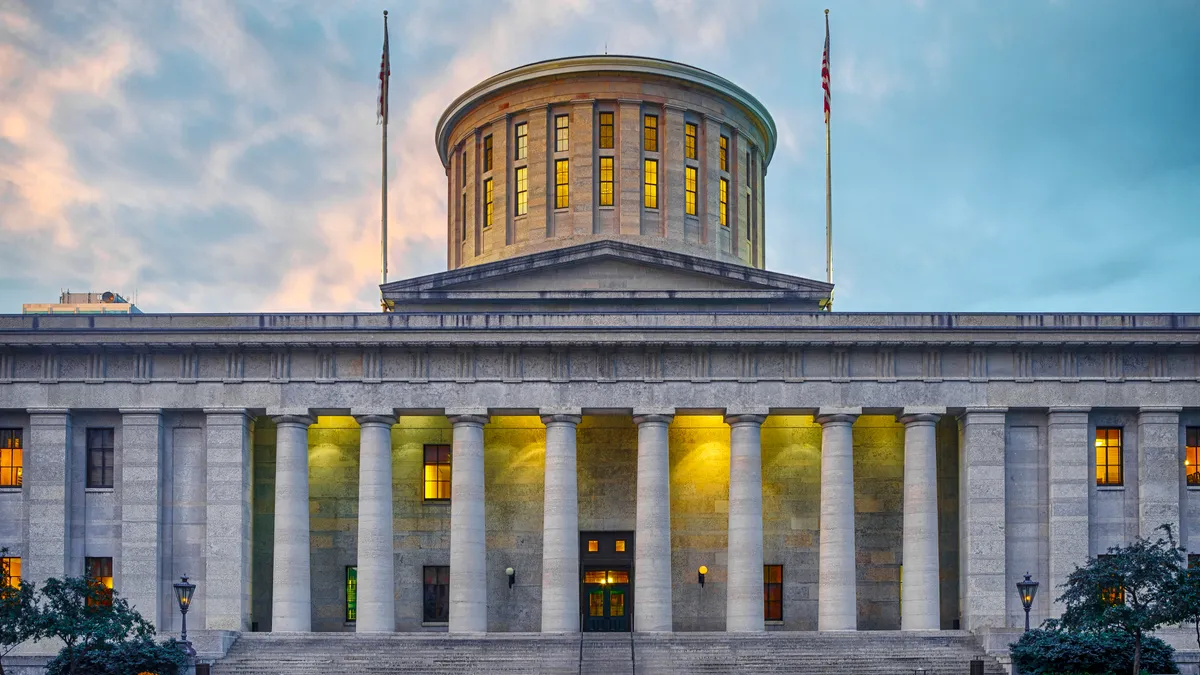Dive Brief:
- Factory activity in New York State unexpectedly sped up this month to the fastest pace in a year, spurred by an increase in new orders and shipments, the Federal Reserve Bank of New York said Monday.
- Despite signs the U.S. labor market is softening nationwide, factory employment in New York rose slightly and the average workweek lengthened, the New York Fed said, citing a survey of companies. Firms were not as optimistic as last month, but they still expect brighter conditions ahead.
- “Manufacturing activity grew at a solid pace” in November, Richard Deitz, an economic research advisor at the New York Fed, said in a statement. “While firms expect conditions to improve, optimism for the future dipped.”
Dive Insight:
The New York Fed’s Empire State Manufacturing Survey, although volatile month-to-month, is widely viewed as a bellwether for U.S. manufacturing. It has gained greater attention this month given the absence of all but a few timely points of federal economic data during the 43-day government shutdown.
“Casting a wide net for information on the economy is especially important at this moment because the recent federal government shutdown has delayed the release of key economic indicators,” Fed Vice Chair Philip Jefferson said Monday in a speech.
The shutdown has likely slowed the economy this quarter, Jefferson said, noting the furlough of federal workers and suspension in government purchases of goods and services, including payments to contractors.
Although delays in federal payments may have also dampened private sector growth, the impact is probably “temporary and likely to reverse in coming months,” Jefferson said.
The economy last quarter expanded at a 4.1% annual pace, the Atlanta Fed said Monday. The estimate aligned with Jefferson’s view that before the shutdown the U.S. “was on a trajectory of moderate growth this year.”
An easing of anxiety over the highest U.S. tariffs since the 1930s may partly account for the improvement in factory activity.
During third-quarter earnings calls, the number of times executives mentioned tariffs fell 33% compared with Q2 earnings calls, according to FactSet. It was the second consecutive month of falling references to import taxes.
“A reasonable base case is that tariffs result in a one-time shift in the price level, not an ongoing inflation problem,” Jefferson said, while not indicating whether he would support a third consecutive quarter-point cut this year in the federal funds rate at the next meeting of policymakers scheduled for Dec. 9-10.
In contrast, Fed Governor Christopher Waller voiced no policy uncertainty in a speech Monday, pointing to signs of a cooling labor market and calling for a reduction in borrowing costs.
With “inflation close to the Federal Open Market Committee's [2%] target and evidence of a weak labor market, I support cutting the committee's policy rate by another 25 basis points at our December meeting,” he said.
“I worry that restrictive monetary policy is weighing on the economy, especially about how it is affecting lower-and middle-income consumers,” Waller said. “A December cut will provide additional insurance against an acceleration in the weakening of the labor market.”














